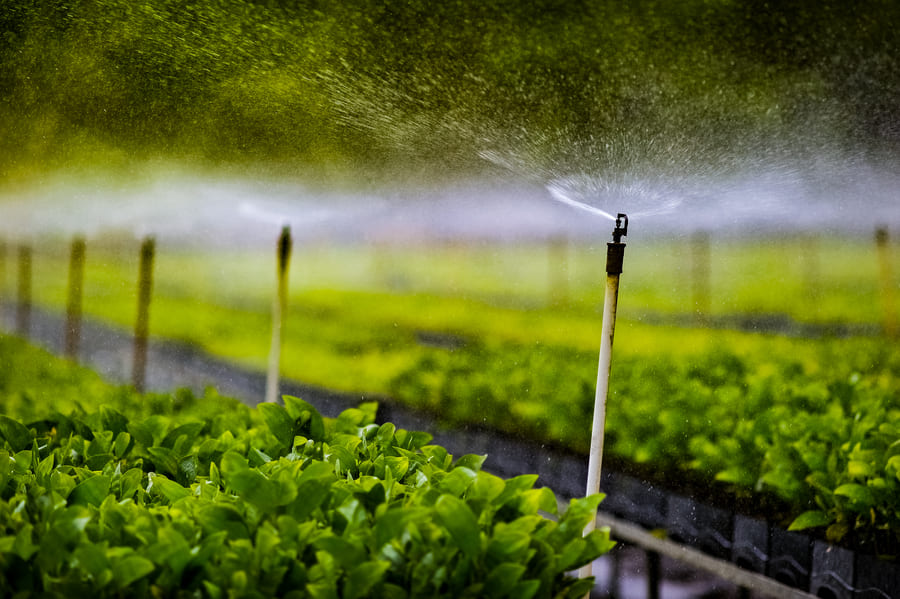Posted On: August 11, 2025
Posted By: KSNM DRIP

Seasonal crop planning is a crucial practice for farmers to ensure maximum yield while optimizing resource use. However, challenges such as unpredictable rainfall, water scarcity, and soil erosion often disrupt traditional farming methods. This is where drip irrigation emerges as a game-changer. Drip irrigation not only ensures a consistent water supply but also enhances crop health and productivity. In this blog, we will explore how drip irrigation solves seasonal crop planning challenges and why farmers should consider adopting it.
Seasonal crops are those that grow and thrive during specific times of the year, depending on temperature, rainfall, and soil conditions. Effective planning involves:
Selecting suitable crops based on the season (Kharif, Rabi, or Zaid).
Managing water resources efficiently to avoid wastage or shortages.
Ensuring timely sowing and harvesting to align with market demand.
Mitigating climate risks that can affect crop growth and yield.
Traditional irrigation methods like flood or furrow irrigation often lead to water wastage, uneven distribution, and soil degradation. These challenges can be effectively addressed with drip irrigation.
Before diving into the benefits of drip irrigation, let’s examine the common issues farmers face:
Water Scarcity: With depleting groundwater levels, maintaining an adequate water supply is becoming difficult.
Uneven Water Distribution: Over-irrigation in some areas and under-irrigation in others can impact crop growth.
Soil Erosion and Nutrient Loss: Excess water runoff washes away essential nutrients, reducing soil fertility.
Weed Growth and Pest Infestation: Traditional irrigation methods promote weed growth and increase pest attacks, affecting crop health.
High Labor and Energy Costs: Frequent irrigation and water pumping raise labor and electricity expenses.
Drip irrigation is a highly efficient method that delivers water directly to the roots of plants in controlled amounts. Let’s see how it addresses the issues in seasonal crop planning:
Drip irrigation minimizes water wastage by ensuring that crops receive the right amount of moisture. Since water is delivered directly to the roots, it prevents evaporation and runoff, saving 30-50% of water compared to traditional methods.
Unlike flood irrigation, which can lead to soil erosion, drip irrigation maintains soil structure. It prevents excessive leaching of nutrients, ensuring better soil fertility and higher crop yield.
Since water is supplied only to the plants and not the entire field, weeds receive less moisture, limiting their growth. This also lowers pest attacks, as pests thrive in excessively moist environments.
Drip irrigation reduces the dependency on labor for watering crops manually. Automated systems further cut down labor costs and energy consumption, making farming more economical.
Whether growing Rabi crops like wheat and mustard or Kharif crops like rice and maize, drip irrigation can be customized to meet the specific water needs of each crop.
To make the most of drip irrigation, farmers should integrate it into their seasonal crop planning. Here’s how:
Assessing Crop Water Requirements
Each crop has different water needs. Farmers should analyze the water requirements for each season and plan irrigation accordingly.
Choosing the Right Drip Irrigation System
Based on the field size, soil type, and crop variety, farmers can choose between:
Surface Drip Irrigation: Best for row crops like vegetables and flowers.
Subsurface Drip Irrigation: Ideal for deep-rooted crops like sugarcane and orchards.
Installing and Maintaining the System
Regular maintenance of drip pipes, emitters, and filters ensures efficient water flow. Cleaning the system periodically prevents clogging and blockages.
Scheduling Irrigation
Using a drip system with timers and sensors helps farmers schedule irrigation at optimal times, reducing unnecessary water usage.
Integrating Fertigation
Drip irrigation allows fertilizers to be delivered directly to the root zone, a technique known as fertigation. This improves nutrient absorption and reduces fertilizer wastage.
Drip irrigation is no longer a luxury but a necessity for modern farming. With unpredictable weather patterns and increasing water scarcity, adopting drip irrigation ensures better yields, healthier soil, and higher profits. By integrating drip irrigation into seasonal crop planning, farmers can take control of their water resources and secure a sustainable future for their farms.
If you're a farmer looking to improve efficiency and maximize your harvest, drip irrigation is the solution you’ve been searching for! Invest in a system today and experience the benefits firsthand.